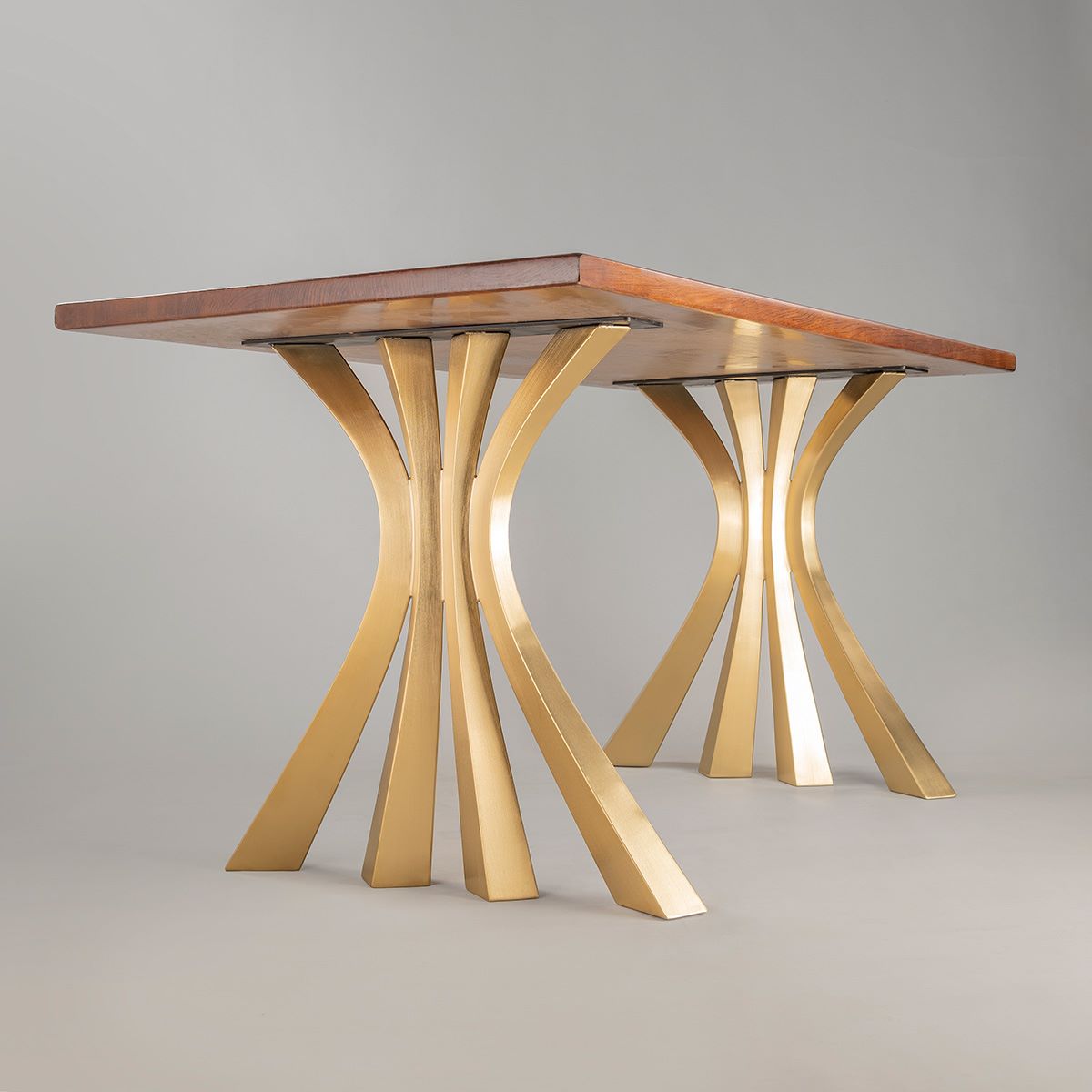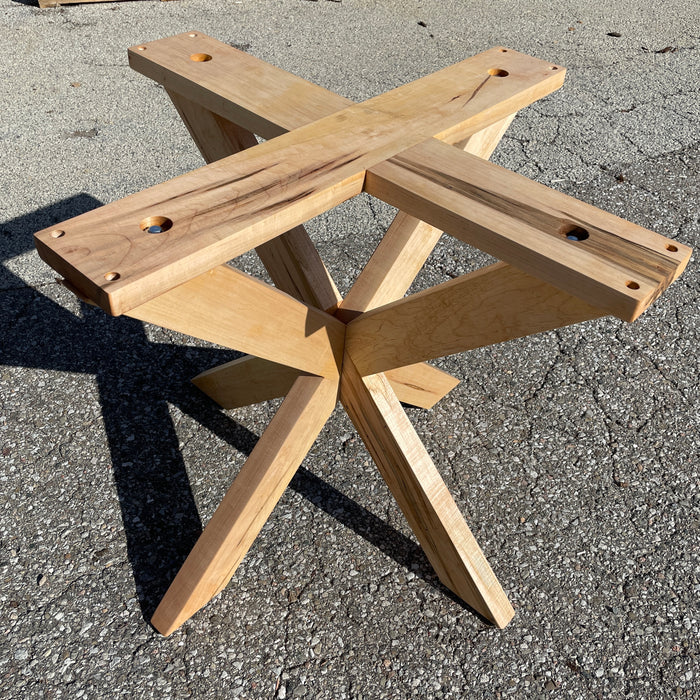Include Toughness and Beauty Using Solid Dining Table Legs Wood Pieces
Include Toughness and Beauty Using Solid Dining Table Legs Wood Pieces
Blog Article
Discovering the Various Sorts Of Eating Table Legs Wood for Your Dining Area
The option of dining table legs timber can profoundly affect both the visual and functional top qualities of your eating space. Solid timber choices, such as oak and walnut, provide a timeless appearance with unparalleled longevity, while crafted timber options provide cutting-edge designs that mimic the splendor of natural grains.
Solid Wood Options

Unlike engineered materials, solid wood is less vulnerable to warping and damage over time when properly kept. Each piece of solid timber is special, showcasing specific features that add to the beauty and personality of the eating table.
Additionally, solid timber can be ended up in many means, ranging from natural oils to discolored surfaces, permitting house owners to individualize their furnishings to match their design. In summary, picking strong timber for eating table legs not just guarantees structural honesty however likewise improves the aesthetic charm of the eating area, making it a beneficial investment for any kind of home.
Engineered Wood Alternatives

Plywood, created from numerous layers of timber veneer, is stable and especially strong, making it an excellent choice for eating table legs. Its split composition enables it to hold up against adjustments in humidity and temperature level far better than conventional solid timber. MDF, on the other hand, offers a smooth surface area for painting or veneering, enabling developers to attain a sleek look while maintaining structural honesty.
Particleboard, commonly utilized in budget-friendly options, offers respectable toughness and is lightweight, making it simpler to handle. Nonetheless, it might not be as sturdy as plywood or MDF. It is vital to take into consideration the intended usage and desired visual when selecting engineered timber alternatives. These materials not only boost the capability of dining spaces yet also permit better style adaptability, making certain that contemporary and conventional designs can exist side-by-side sympathetically.
Reclaimed Wood Features
Recovered timber supplies a distinct mix of sustainability and personality, making it a progressively prominent selection for dining table legs. Sourced from old barns, manufacturing facilities, and other frameworks, recovered wood personifies a background that brand-new products simply can not reproduce. more Each piece carries its very own story, noted by unique imperfections, knots, and differing grain patterns, which add to a table's special visual allure.
Along with its visual beauty, recovered wood is an eco-friendly alternative. By repurposing formerly made use of materials, it lowers the demand for brand-new lumber, thus helping to save woodlands and reduce waste. This aligns with an expanding customer choice for sustainable practices in furniture.
Moreover, redeemed wood is often extra long lasting than newly collected timber as a result of its age. The all-natural drying procedure that recovered wood undertakes cause a denser and stronger product, making it less vulnerable to bending and splitting. This boosts the long life of dining tables, enabling them to endure the rigors of day-to-day usage.
Softwood vs. Wood
When selecting dining table legs, comprehending the differences between softwood and wood is essential for attaining both visual and practical goals. They normally show a more rustic appearance, making them ideal for informal or country-style eating spaces.
On the other hand, woods, sourced from deciduous trees like cherry, maple, and oak, are renowned for their density, stamina, and durability. The intricate grain patterns and rich tones of woods give a classic and advanced charm, making them ideal for official eating setups. While woods have a tendency to be extra pricey and larger, their strength against damage frequently justifies the investment.
Inevitably, the choice in between softwood and wood for dining table legs should align with your design vision, usage requirements, and budget, ensuring that your dining space shows your personal style while remaining useful over time.

Surfaces and Treatments
The visual charm and durability of table legs can be significantly boosted with various finishes and therapies. These procedures not only protect the timber from damage but additionally raise its look, enabling it to match diverse interior styles.
One typical treatment is discoloring, which passes through the wood and boosts its natural grain while adding color. Discolorations supply an abundant, elegant appearance, allowing home owners to match their furniture with existing decor. Alternatively, clear coatings such as polyurethane or varnish produce a safety layer without modifying the timber's Get More Information original hue, making sure longevity against damage.
Additionally, all-natural oils, like tung or linseed oil, nurture the wood and provide a subtle shine, all while being eco-friendly. These oils permit the surface area to take a breath, preventing dampness build-up and prospective bending.
For those seeking a rustic charm, weather-beaten or troubled finishes can be put on develop an aged appearance, including personality to the piece. Inevitably, the selection of therapies and coatings depends upon personal preference, wanted aesthetic appeals, and the particular wood type, making it vital to think about these factors when choosing eating table legs for your space.
Verdict
Solid timbers, crafted choices, and reclaimed options each offer distinct benefits, catering to various preferences and demands. Eventually, the selection of timber type ought to straighten with desired design, durability, and ecological considerations, enhancing the overall dining experience.
The selection of dining table legs wood can exceptionally impact both the practical and aesthetic high qualities of your eating space - Dining Table Legs Wood. Solid wood alternatives, such as oak and walnut, provide a classic look with unequaled resilience, while crafted wood alternatives provide cutting-edge designs that imitate the richness of natural grains. Strong wood offers an ageless high quality that can raise the overall design of an eating room. Each piece the original source of strong wood is unique, showcasing specific features that add to the appeal and character of the dining table
Moreover, recovered timber is usually extra sturdy than newly collected wood due to its age.
Report this page